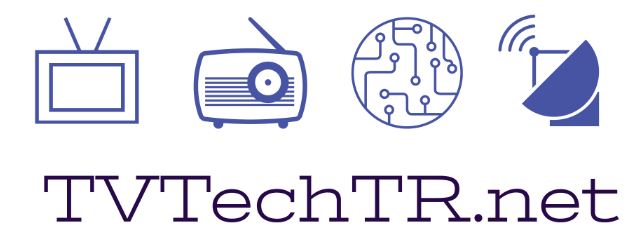It is my pleasure to introduce you Mr. Uygar BOYNUDELİK. He is a friend of mine who is working in the media business in Turkey.
1. Dear Mr. Boynudelik, let me start with a classical question. Can you please introduce yourself for my readers.
Dear Özgür, let me first start by thanking you for regulary writing blog posts and being so sincere and transparent and open-hearted as opposed to the general positioning in the industry. Frankly, I'm a fan of yours, truly :) Anyway, I can simply call myself an engineer who is quite interested in TV technologies. I'm really enjoying reading, writing, researching about it. This is what I do for a living (I’m in charge of STB product management in Turkcell) and also my beloved hobby. I keep writing on www.uygarboynudelik.com in Turkish and on www.turkishtvmarket.info in English since many years. I encourage your readers to have a look my web sites, at the end we’re living in a small industry J
2. When we look at the pay TV business in Europe we see that majority of the population is subscribed to one of the offers. However, in Turkey, payTV has just 35 % market share. According to you what is the main difference between the markets?
Let’s me first start with a quick summary of the Pay-TV market in Turkey. Based on the latest report by BTK (regulatory body in Turkey) the Pay-TV subscribers are categorized as follows:
DTH:
- Digiturk: 2,79 mio
- D-Smart: 931K
- Filbox: 29K
- Tivibu uydu: 116K
Cable:
- Turksat Cable: 1,16 mio
IPTV:
- TTNet: 350K
- Turkcell TV+: 268K
In total, the number of Pay-TV subs are 5,6 million. Actually there are households with more than 1 subscription. Anyway for the sake of simplicity let’s consider there are around 20 million households, then market penetration is calculated as 28 percent. To make things clear this is the ratio of households with Pay-TV subscription. There are certainly homes with OTT services only such as Netflix, Apple TV etc. Nevertheless, from my perspective the Pay-TV rollout should be calculated with this methodology. After this relatively long introduction, coming back to your question my short answer will be the main difference about the market maturity is simply the average income level of the population. If you compare income per capita in Western Europe to Turkey you’ll notice that income per capita is roughly four times bigger in Europe. I see the gap between average income level as the main reason. Secondly, the high level of piracy is another reason, it’s quite difficult to sell content in Turkey while there are tons of free-of-charge, good quality content on the internet. Thirdly, the negative experience people had with various operators are another barrier for the Pay-TV market to grow. People had suffered a lot due to long-lasting and tiring cancellation processes, miscalculated or miscommunicated surprising bills, not best-in-class customer care cycles etc. All these stuff somehow caused people to try to stay away from 24-hours commitment type of Pay-TV offers.
3. Cable, satellite & terrestrial are used nearly 30 % each for TV reception in Europe. As you well know, in Turkey, TV reception is mainly depended on satellite. What are the results of this situation?
That is a very good point Özgur. I think Turkey is kind of unique with this split. If you don’t mind I’d like to share first my two cents about the root-cause of this uniqueness, later on I’ll come back to the consequences. Historically terrestrial broadcasting has been a real mass in Turkey. The government failed to regulate the licenses and broadcasters with the political power or financial strength managed to build their own towers and broadcast their live TV channels. Considering cable space, this medium has been and still is under control of Turksat -a state-owned company- for many years and they’ve lacked to make the right level of investment to expand their footprint. Even today, cable service is only available on limited areas. On the other hand, satellite installation has been increasing constant since 15-20 years in Turkey. As the satellite dish installation coupled with ‘in China made’ cheap satellite receivers become more and more widely penetrated broadcasters started to invest to have free-to-air channels on Turksat satellite even with poor video quality. The main business model for the broadcasters was to have a free-to-air channel on air, to have the possibility to reach millions of people and try to get any possible level of rating and get the interest from advertisers. Alternatively there are a variety of tele-sales channels that are selling remarkably interesting stuff (things to increase sexual power, things supposedly heal your diseases etc.) and dating platforms. Also from time to time, we hear about lawsuits of the people who one way or another fooled by some of these channels. Today, there are almost 500 FTA channels in Turksat. I think this is not typical. Some of these channels are local, some of them are poor video quality. Coming back to the consequences, this disproportionate balance between the alternative mediums (terrestrial, satellite, cable, IP) resulted in almost to chance for Digital Terrestrial adaptation in the market which is already too much delayed. The content quality of the Live TV channels is significantly biased towards rating. The producers are focused on not producing content with high quality but content that could be appealing for the majority of the people thus bringing better ad revenue. The majority of the programs during daytime is either about matching man and woman willing to marry or Big brother type of programs with a lot of aggression. I think digital terrestrial television is dead at birth.
Many thanks for your answers & time.


Comments
Post a Comment
Comments will appear after approval, which may take time :)